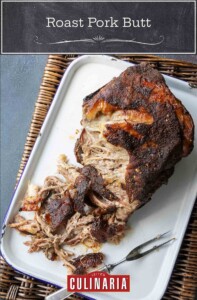This roast pork butt, coated in a simple rub of brown sugar, paprika, cumin, and red pepper flakes, is an incredibly easy recipe to make and yields enough pulled pork to feed a small army. It’s roasted low and slow in the oven until falling-apart tender.

Adapted from Nick Evans | Love Your Leftovers | Lyons Press, 2014
There are tons of recipes for pork butt out there, and I’ve made my share of them. Most are ok, and a few are really good, but I’ve never had one as great as this one.
And I’m not alone. Not only has every guest who had it raved (and asked for the recipe) it’s the most popular recipe on the site. And has been for nine years.
That’s no small feat.
Two things make this pork butt unforgettable. First, the rub. It contains salt, brown sugar, paprika, red pepper flakes, cumin, and black pepper. That’s it, but the whole of this rub is far greater than the sum of its spices, er, parts.
Second, the low and slow cooking. Roasted in a 250°F oven, the butt takes a whopping eight to 10 hours to become pull-apart tender. It’s so tender that I could slip out the bone with nary a shred of meat attached when I served it.
And while the pork butt roast recipe calls for a bbq sauce of your choice, don’t bother. No one I’ve served this to ever reached for it. It’s so good it can be served on its own. Sure, you can pile the cooked pulled pork on a roll under a heap of coleslaw or in Indian-inspired pork tacos, but do yourself a favor and try it naked first.
Why our testers loved this
The crispy bark and tender pulled pork that this recipe makes had our testers clamoring for more. Linda P. calls this roast pork butt “excellent,” and fellow tester Larry N. was smitten with the “crisp, spice-rubbed exterior.” It makes you want to try it, doesn’t it?
Notes on ingredients
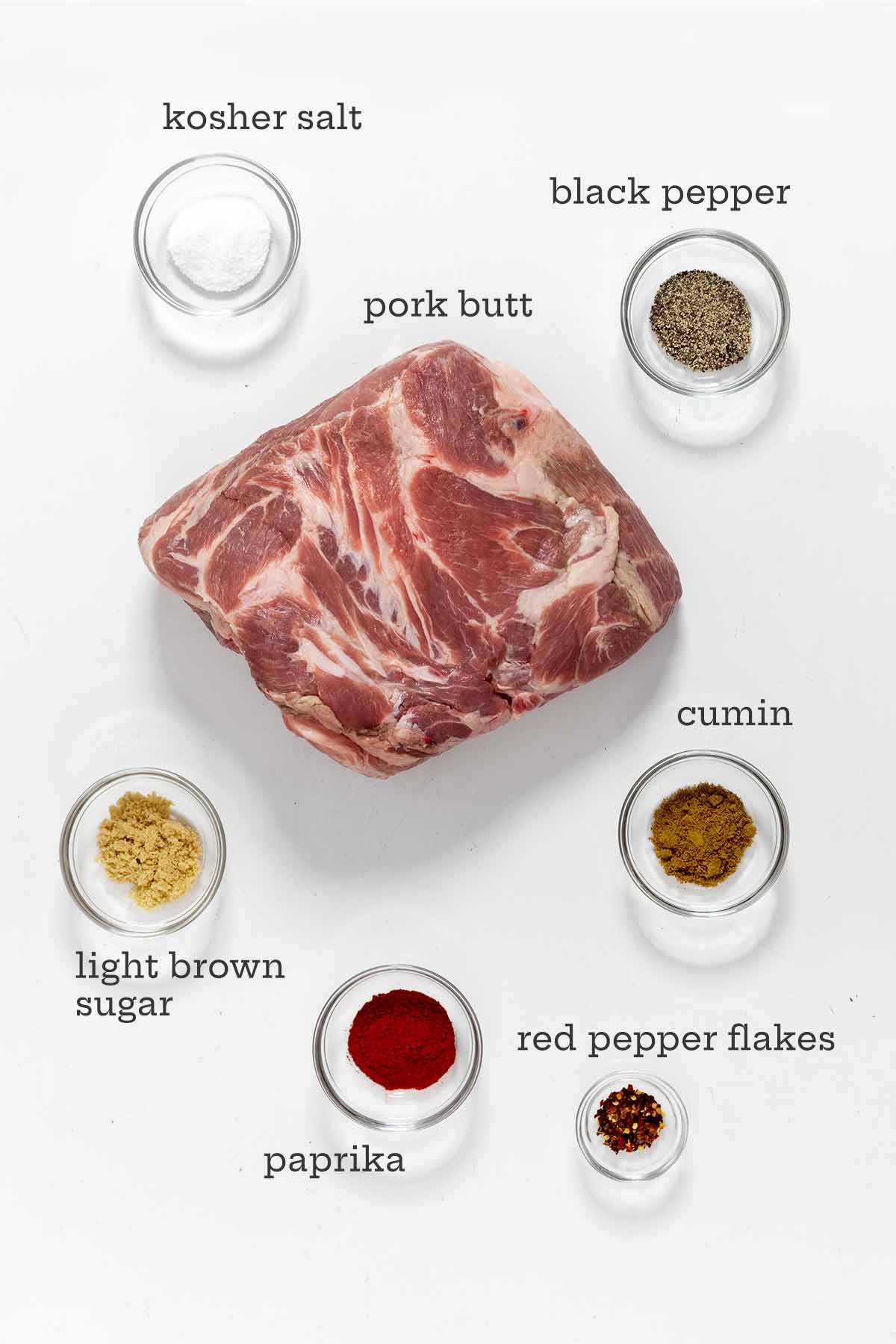
- Diamond brand kosher salt–When it comes to salt, particularly kosher salt, weight matters. The weight of 1 tablespoon varies from brand to brand, so I recommend that you weigh your salt and use 9 grams for this recipe. If you don’t have a scale and aren’t using Diamond brand, use 2 teaspoons to avoid oversalting the meat.
- Red pepper flakes–If you are sensitive to heat or cooking for those who are, use 1/2 tablespoon of pepper flakes in your rub. If you love a little extra spice, use a full tablespoon.
- Pork butt–I recommend using a well-marbled cut of pork butt or Boston butt for best results. Pork shoulder will also work here, but it can be a bit more sinewy and gristly. If your pork comes with the skin on, remove it before cooking.
How to make this recipe
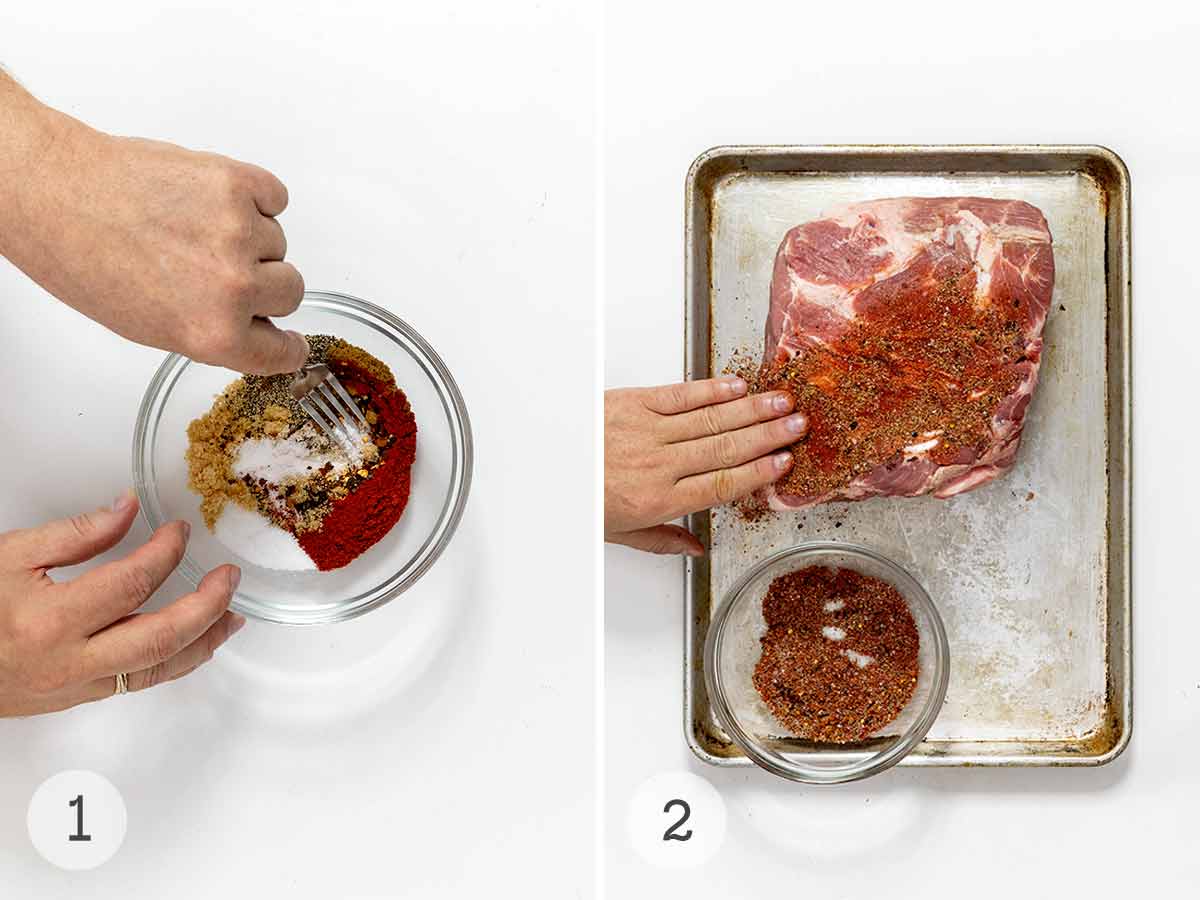
- Stir together the salt, sugar, paprika, pepper flakes, cumin, and black pepper in a small bowl.
- Rub the pork all over with the spice mixture. It should be coated on all sides.
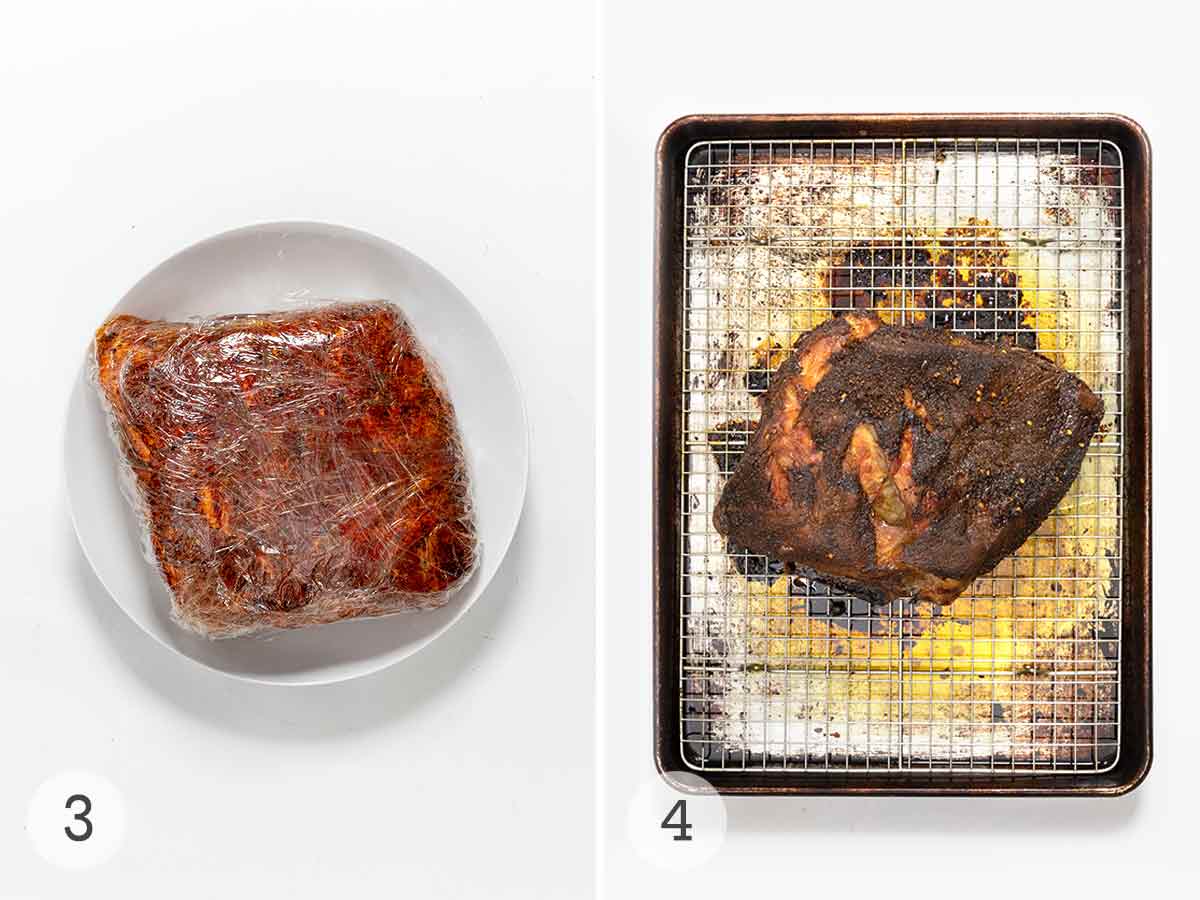
- Wrap the pork in plastic and refrigerate overnight.
- Roast the pork, fatty side up, on a roasting pan until the internal temperature reaches 190 to 195°F. Let it rest for 15 minutes.
- Use two forks to shred the pork. Serve alone or with your favorite barbecue sauce, if desired.
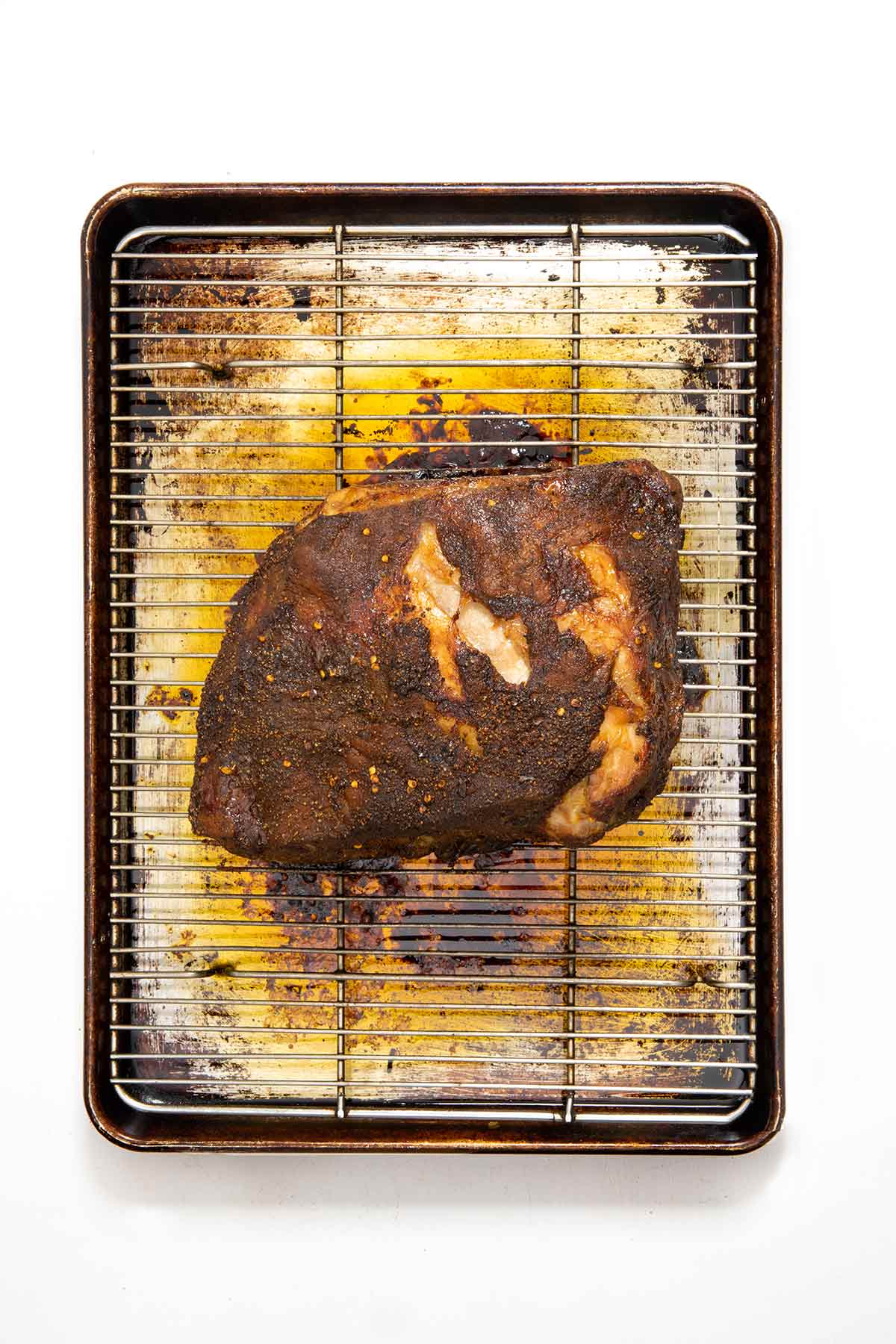
We’ve learned a thing or two about slow-roasted pork butt and shoulder over the years, and so we want to share those tricks with you. Feel free to chime in and add a comment below with any truths you’ve experienced in your pork butt escapades.
What’s the difference between pork butt, Boston butt, and pork shoulder?
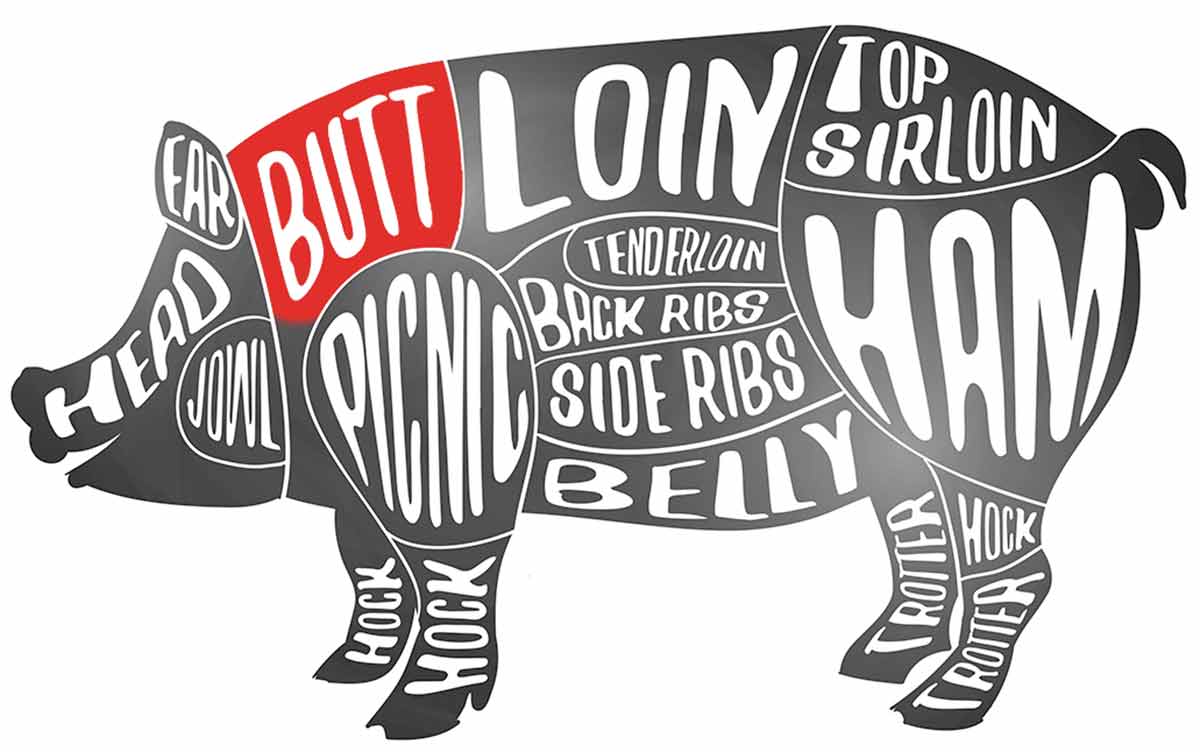
Pork butt isn’t actually the butt or backend of the pig. That’s the ham. Pork butt is a squarish cut that comes from higher on the shoulder of the pig and has lots of fat. It’s also known as Boston butt.
Pork shoulder is the lower, triangular portion of the shoulder and is more muscular.
Where things get confusing is many stores use the terms interchangeably. Luckily, both cuts work in this recipe, but opt for the butt (and its fat) when you can.
As one of our recipe testers, Suzanne Fortier, explains, “I was taught by my French-Canadian grandmother and father to request the butt end of the shoulder, or the Boston butt. The other end, sometimes called the picnic shoulder, tends to be gristlier. The Boston butt is the only way to go.”
How do I buy a pork butt?
When buying a pork butt (Boston butt), look for one around eight to ten pounds. You can find them trimmed down to five or six pounds, but they usually trim off a lot of fat to make that weight, and fat isn’t a bad thing, especially if you’re grilling or roasting it.
Also, try to get the butt with the bone (sometimes labeled as a picnic butt or shoulder butt roast). Regardless of the method you use, the bone gives the meat much more flavor as it cooks. It also conducts and retains heat exceptionally well, allowing the meat to cook at such a low temperature.
Do I really need to use a meat thermometer for this recipe?
Absolutely. This recipe is almost impossible to pull off without a meat thermometer.
You can’t judge the pork by sight or feel. A thermometer is the only way to know. I prefer a digital probe thermometer that can be left in the pork as it roasts or grills.
When you insert the thermometer, stick it into the thickest part of the pork butt, and make sure it’s not touching the bone, or you’ll get a false reading.
Can I make this on the grill?
Yes. Preheat your grill to 250°F (121°C). We highly recommend using an oven thermometer above the grill surface to make sure your temperature is as close to 250° as possible.
If you’re using a gas grill, this means turning off all the burners except one and turning that burner on from medium-low to low.
If you’re using a charcoal grill, prepare your grill for indirect heat and build a good coal base before adding the pork. You’ll likely have to add charcoal a few times throughout cooking to maintain a nice, even heat. It’s also not a huge deal if your grill gets hotter or cools off a bit. Just do your best to keep it low and steady.
Place your pork butt, fatty side up, directly on the grill rack. Cook the pork at 250°F (121°C) until the internal temperature reaches 190 to 195°F (88 to 91°C). By this point, the exterior should be crispy and dry. This will most likely take between 7 and 10 hours, although we’ve had it take up to 14 hours on a finicky charcoal grill.
For super-moist pulled pork, remove it from the grill, wrap it tightly in a couple of layers of heavy-duty aluminum foil, and let it rest for 30 to 45 minutes before carefully unwrapping it.
Shred the pork as instructed in the recipe. Be forewarned: If you’re an aficionado of the crisp bark, it’ll soften when wrapped in foil.
What can I serve with my roast pork butt?
This Boston butt recipe is stupendously magnificent on its own. Although, some would say it’s arguably even better doused with a vinegary barbecue sauce and heaped upon homemade buns (maybe even with a spoonful or three of creamy coleslaw beneath the top bun).
Helpful tips
- Letting the pork sit overnight after rubbing it with the spice mixture is optional but highly recommended.
- Make sure to let the pork butt rest before shredding it. It will be hot!
- The pulled pork will store well in the fridge in an airtight container for up to 4 days. If you’re freezing it for later, divvy it into 1-pound servings and freeze it in storage bags for up to 3 months. Reheat in a 300°F oven until warmed through.
- This recipe is suitable for gluten-free and dairy-free diets.

More great pork butt recipes
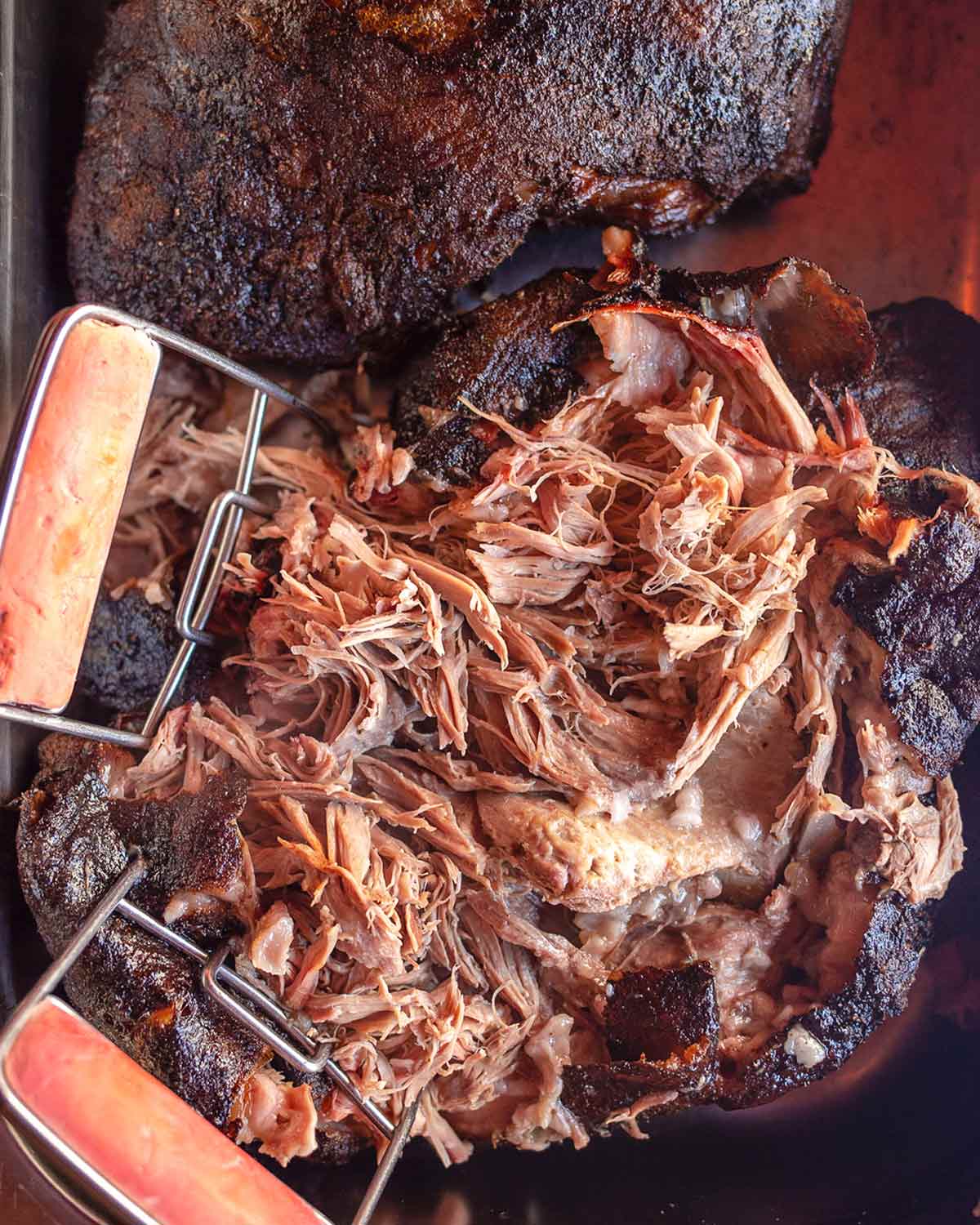

☞ If you make this recipe, or any dish on LC, consider leaving a review, a star rating, and your best photo in the comments below. I love hearing from you.–David
Roast Pork Butt

This roast pork butt, coated in a simple rub of brown sugar, paprika, cumin, and red pepper flakes, is an easy recipe to make and yields enough pulled pork to feed a small army. Perfect for Super Bowl, weekend bashes, and weeknight dinners.
-
In a small bowl, stir together the salt, sugar, paprika, pepper flakes, cumin, and black pepper.
-
Rub the pork butt all over with the spice mixture. The pork butt should be completely coated on all sides. If you have time, tightly wrap the pork in plastic wrap, place it on a plate, and refrigerate overnight to let the flavors mingle.
-
Preheat the oven to 250°F (121°C). Place a wire rack in a roasting pan. (To make this on a grill, see the instructions in the FAQs above.)
-
Place the pork butt, fat side up, on the rack. Roast the pork, uncovered, until the internal temperature reaches 190 to 195°F (88 to 91°C). By this point, the exterior should be crispy and dry. This is similar to what’s referred to as “bark” when smoking on a grill. This can take anywhere from 4 to 10 hours, depending on your oven and the size of your pork butt.
-
Remove the roast from the oven and let it rest for 15 minutes.
If you’re craving super-moist meat for pulled pork, remove the pan from the oven, tightly wrap the pork butt in a couple of layers of heavy-duty aluminum foil, and let it rest for 30 to 45 minutes to soften the exterior.
-
Shred the roast pork butt with a couple of forks, evenly mixing the crisp, dry edges with the insanely moist, tender pork inside.You may want to slather the pulled pork with barbecue sauce to impart flavor and sauciness, but I urge you to try it naked first.
- Rest--Letting the pork sit overnight after rubbing it with the spice mixture is optional but highly recommended.
- Cool–Make sure to let the pork butt sit before shredding it. It will be hot.
- Storage–The pulled pork will store well in the fridge for up to 4 days. If you’re freezing it for later, divvy it into 1-pound servings and freeze it in storage bags. Reheat in a 300°F oven until warmed through.
- Dietary–This recipe is suitable for gluten-free and dairy-free diets.
Serving: 1servingCalories: 305kcal (15%)Carbohydrates: 1gProtein: 43g (86%)Fat: 13g (20%)Saturated Fat: 5g (31%)Polyunsaturated Fat: 1gMonounsaturated Fat: 6gTrans Fat: 0.1gCholesterol: 136mg (45%)Sodium: 588mg (26%)Potassium: 788mg (23%)Fiber: 0.2g (1%)Sugar: 1g (1%)Vitamin A: 99IU (2%)Vitamin C: 1mg (1%)Calcium: 39mg (4%)Iron: 3mg (17%)
![]() If you make this recipe, snap a photo and hashtag it #LeitesCulinaria. We’d love to see your creations on Instagram, Facebook, and Twitter.
If you make this recipe, snap a photo and hashtag it #LeitesCulinaria. We’d love to see your creations on Instagram, Facebook, and Twitter.
Recipe Testers’ Reviews
Recipe © 2014 Nick Evans. Photos © 2014 David Leite. All rights reserved. All materials used with permission.
![]() If you make this recipe, snap a photo and hashtag it #LeitesCulinaria. We’d love to see your creations on Instagram, Facebook, and Twitter.
If you make this recipe, snap a photo and hashtag it #LeitesCulinaria. We’d love to see your creations on Instagram, Facebook, and Twitter.


